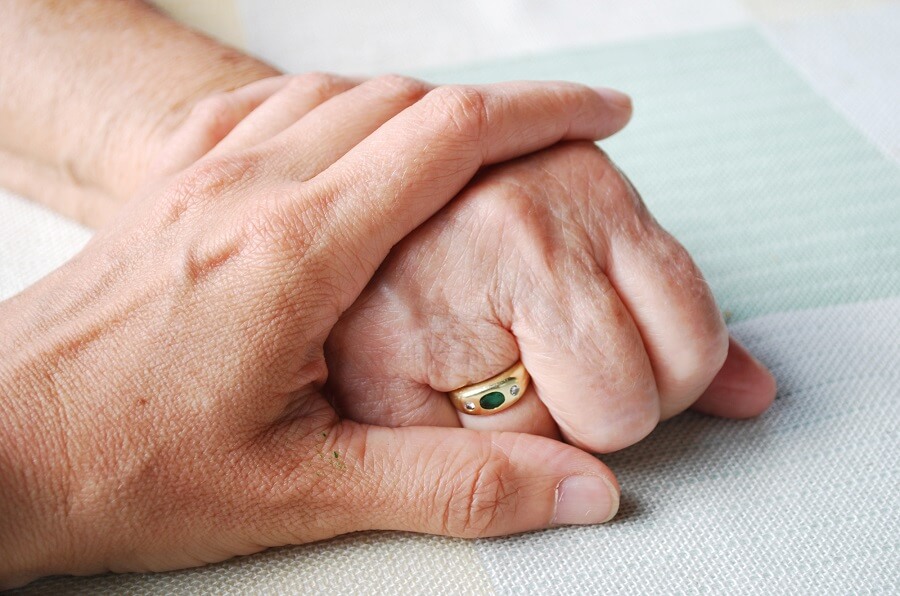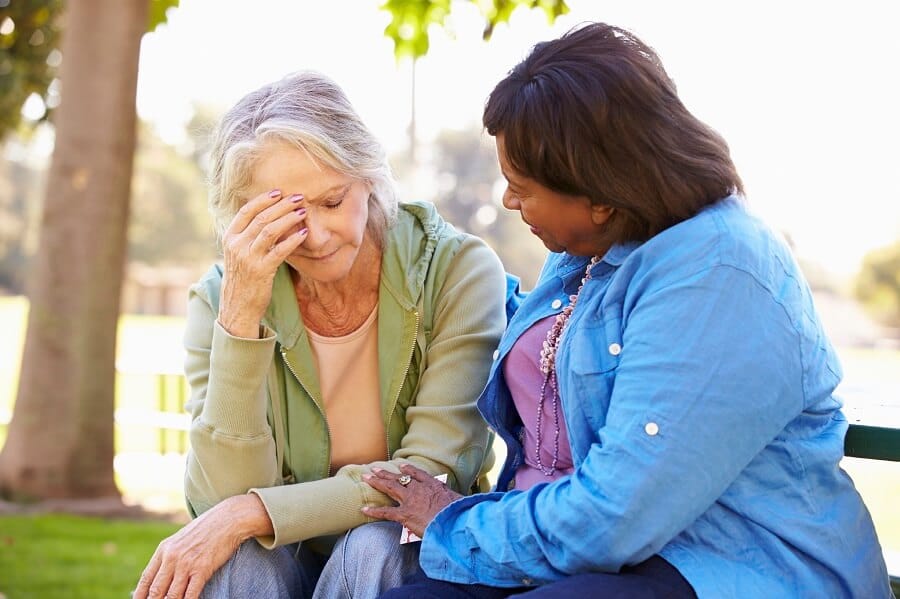We’re all familiar with the famous five stages of grief that people are supposed to go through whenever they experience a significant loss. However, not many people know how this model came to be and what it was originally designed for. Nowadays, even if many people consider this model outdated and limiting, others still identify these five stages of grief whenever they lose someone close to them. Even if it would be a mistake to assume that we can follow the model to the letter, there are parts of it that resonate with a lot of people experiencing loss. Today, we are going to look at the history of this model, then go through each phase and briefly talk about it.

The Five Stages of Grief – Brief History
This five stages of grief model is also called the Kübler-Ross model after the woman who first introduced it in 1969, Elisabeth Kübler-Ross. This model claims that people experience 5 types of emotions before they die. The emotions correlate with 5 stages: denial, anger, bargaining, depression, and finally acceptance.
So as we can see, Kübler-Ross applied the model to people who were about to die, namely cancer patients. She worked with people who were terminally ill and wrote a book called “On Death and Dying”. There, she details these 5 stages of grief. However, from 1969 onward, people have embraced this model and started applying it to any type of loss, even though research does not actually support it.
Kübler-Ross herself admitted later on that we cannot regard these stages as linear. Nor can we think that we can predict the exact progression of grief in a person’s life. The more accurate depiction of this model would be that of certain emotions that a person can but doesn’t necessarily have to feel when faced with a loss, and that can occur in any particular order.
The Five Stages of Grief Explained
Denial
Denial was identified as the first stage and the moment when we are still in shock over what is happening in our life. It is seen as a coping mechanism through which our mind is trying to protect us from imminent loss. In this stage, people often feel numb and as if nothing matters. We are overwhelmed by what we feel and that is why we’re trying to repress it. It is a way of getting through the day and not have to face everything at once. If we feel like we cannot handle the situation, we regard it with disbelief. It is understandable that when we face an important loss, we cannot wrap our minds around the fact that something so major has changed in our life. Not to mention the fact that we have no control over the situation. When you start asking questions such as “Why did this happen?”, you are out of the denial phase.
Anger
A lot of people who recently suffered a loss can feel angry. They can direct the anger at a lot of things: at themselves, at others, at the world in general, even at God. Some people will choose to exteriorize that anger, while others will try to repress it. Even if we have to be careful how we exteriorize anger (in a non-violent way), if we keep it bottled up, it might cause us to blame ourselves for the loss. We might end up questioning whether we’ve done everything we could have done to avoid it or not. Anger is not an unnatural feeling and expressing it in healthy ways can be beneficial to the healing process. Even if it seems dangerous, it is an improvement from the numbing feeling that you can’t connect to anyone.

Bargaining
After the loss of a loved one, most of us would give anything to get that person back. This too is a natural response to loss. We might feel guilty and constantly wonder about what other possibilities we may have missed. Or we might start the bargaining process before the actual loss, if we are able to anticipate it. People who believe in God will most often pray and offer anything in return for a chance to keep the loved one close. Once the loss has occurred, even if we know that it is impossible, we still wonder if we could do something to return to the way things were. Some people would be capable of doing anything in order to stop the pain they’re experiencing. Bargaining is just another way to stop focusing on the present moment.
Depression
When all of the emotions finally catch up with us, we tend to get depressed. This stage can be one of the hardest ones to get out of. That is because once depression takes over, you sincerely see no solution to your pain. We tend to cut all ties with the people around us, we wonder what the point of continuing to live is, and experience immense sadness. We feel exhausted and apathic, and we often don’t even want to get out of bed. However, depression in this context does not point to mental illness. Rather it is a natural response to an important loss and the grief that follows it. That is why we have to experience it fully before moving on with our lives.

Acceptance
The final stage in the five stages of grief model entails accepting the loss that you’ve experienced and making peace with the entire situation. It is not about feeling “OK” with it, because that will never happen. It is simply about accepting the current reality as one that we have to live in from now on. As much as we try to cling to the past, the truth is that we have to readjust our life accordingly. In this stage, we start having better days and we learn how to enjoy life again. We connect with other people, we form new relationships, and so on. It might sometimes feel as if we’re betraying the person who is no longer with us. However, we have to evolve and stop living in the past sooner or later.
The Seven Stages of Grief
Since the Kübler-Ross model of the five stages of grief, other people have tried to make sense of what we feel when we experience loss. For instance, there is another model that identifies seven stages of grief. The stages are: shock (or disbelief), denial, anger, bargaining, guilt, depression, and acceptance. As we can see, this aims to be a more comprehensive model by adding two more stages to the Kübler-Ross one. However, as in the case of the original one, there is no way of knowing how a person will react to a loss and what are the stages that he or she will go through.

Everything Summed Up
The five stages of grief model, even if not entirely accurate or supported by research, does provide us with an inside into some of the emotions that we go through after the loss of a loved one. It is important to understand that every person is unique. As a consequence, no one will experience grief the same way. Some people may only go through some of the stages, or none at all. Others may go through them but in a completely different order. No matter which one of these five stages of grief you’re experiencing or will experience in the future, the important thing is to remember that there is a way out of each of them.
